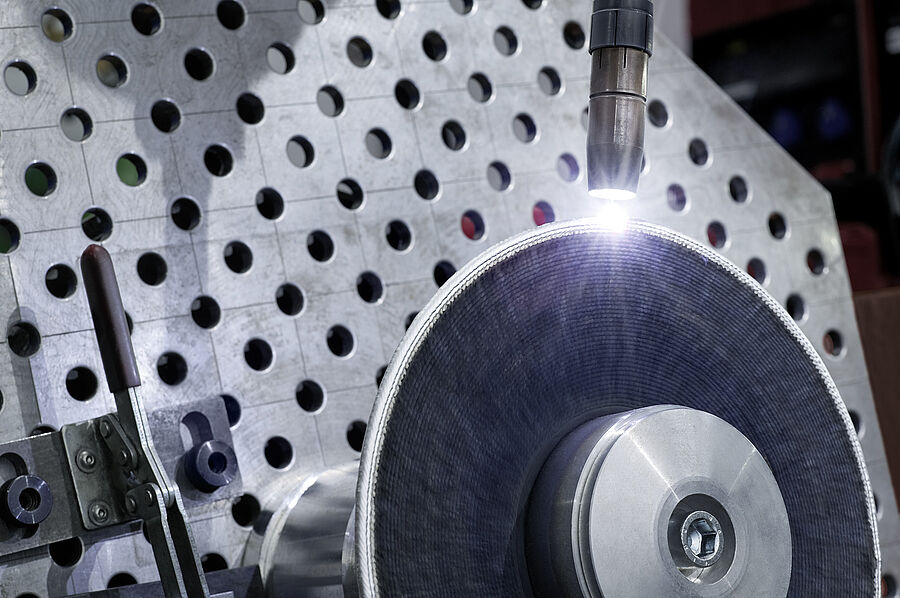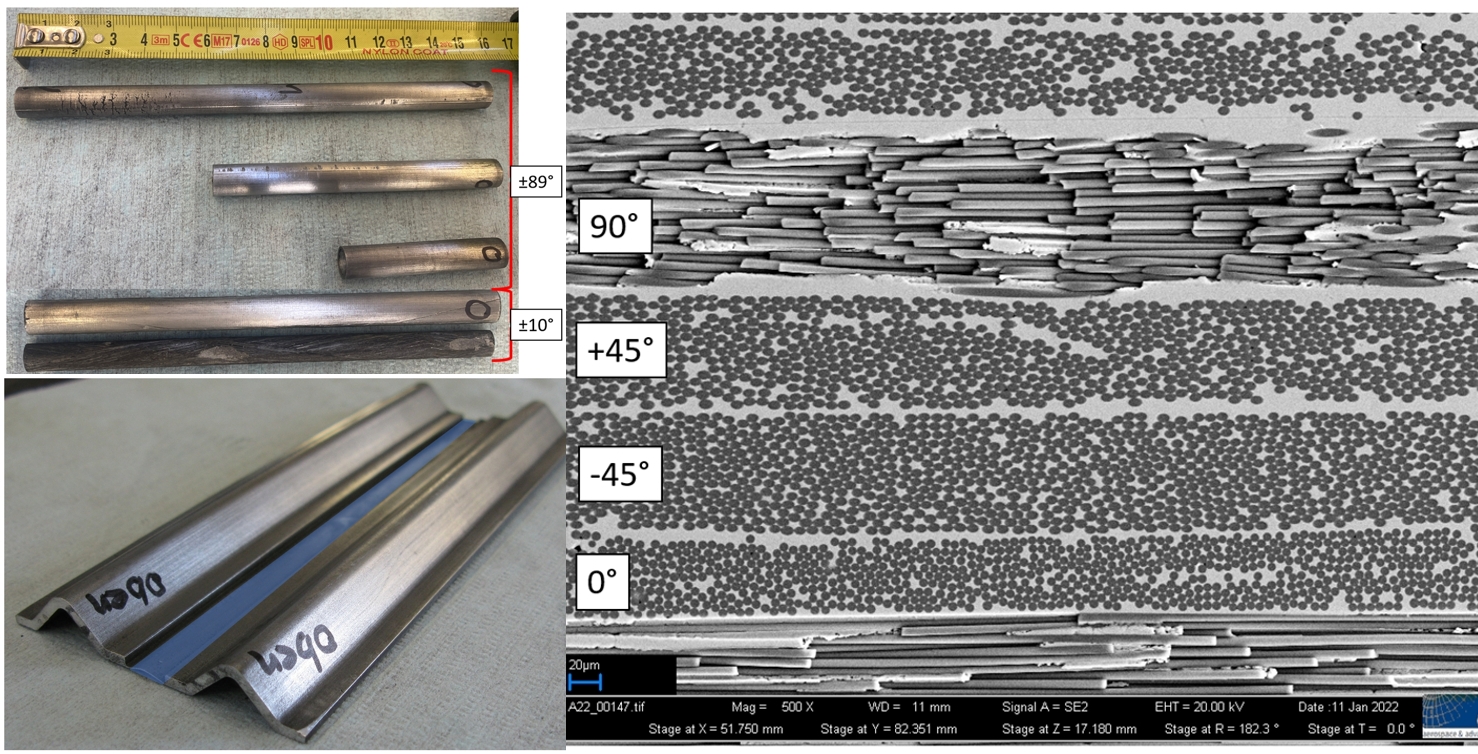Advancement of Aluminium Composites for Space and Earth Applications
The aim of the project was to further develop gas pressure infiltration technology for fibre-reinforced metal matrix composites (MMC). This technology has already been researched at the LKR for several years. Now the complexity of the layer structure and the variety of finishable geometries should be increased. In previous projects, the process had already been successfully established for plates with unidirectional layer structure. In Space Al-MMC, samples with cross-laminates and quasi-isotropic layer structure were now produced. In addition, the first profiles such as L-profiles and hollow profiles were manufactured. These extensions enable the application of gas pressure infiltration technology to a wider range of workpiece geometries.
Project procedure
The composites were produced by gas pressure infiltration, where a fibre preform was infiltrated with a liquid metal matrix by means of pressure and temperature. To achieve the goal of increased complexity of the layer structure, various process parameters such as temperature, pressure and cycle times were adjusted. In the production of profiles, the existing tools were adapted according to the new geometries. Hollow profiles required adjustments both in the preforming step and in the post-processing of the infiltrated geometry. In contrast to plates and simple profiles, a core was used here that had to be removed after production. Fibre laying was not done manually, but mechanically by winding. It was of particular importance to avoid compromising the mechanical properties in any changes compared to the baseline (flat plate with unidirectional reinforcement). Therefore, samples were taken to characterise the mechanical properties and microstructure, paying particular attention to the fibre-matrix interface. The results obtained allowed conclusions to be drawn about process changes and their effects.
Project results
All objectives of the project were successfully achieved. It could be demonstrated that samples with more complex fibre layer structures [0.90] and quasiisotropic orientation can be produced. The mechanical properties of the samples show promising results and complete infiltration of the fibres was achieved. The samples were tested under conditions similar to those in space and no performance degradation was observed. In addition, the successful production of L-profiles and hollow profiles was demonstrated.




